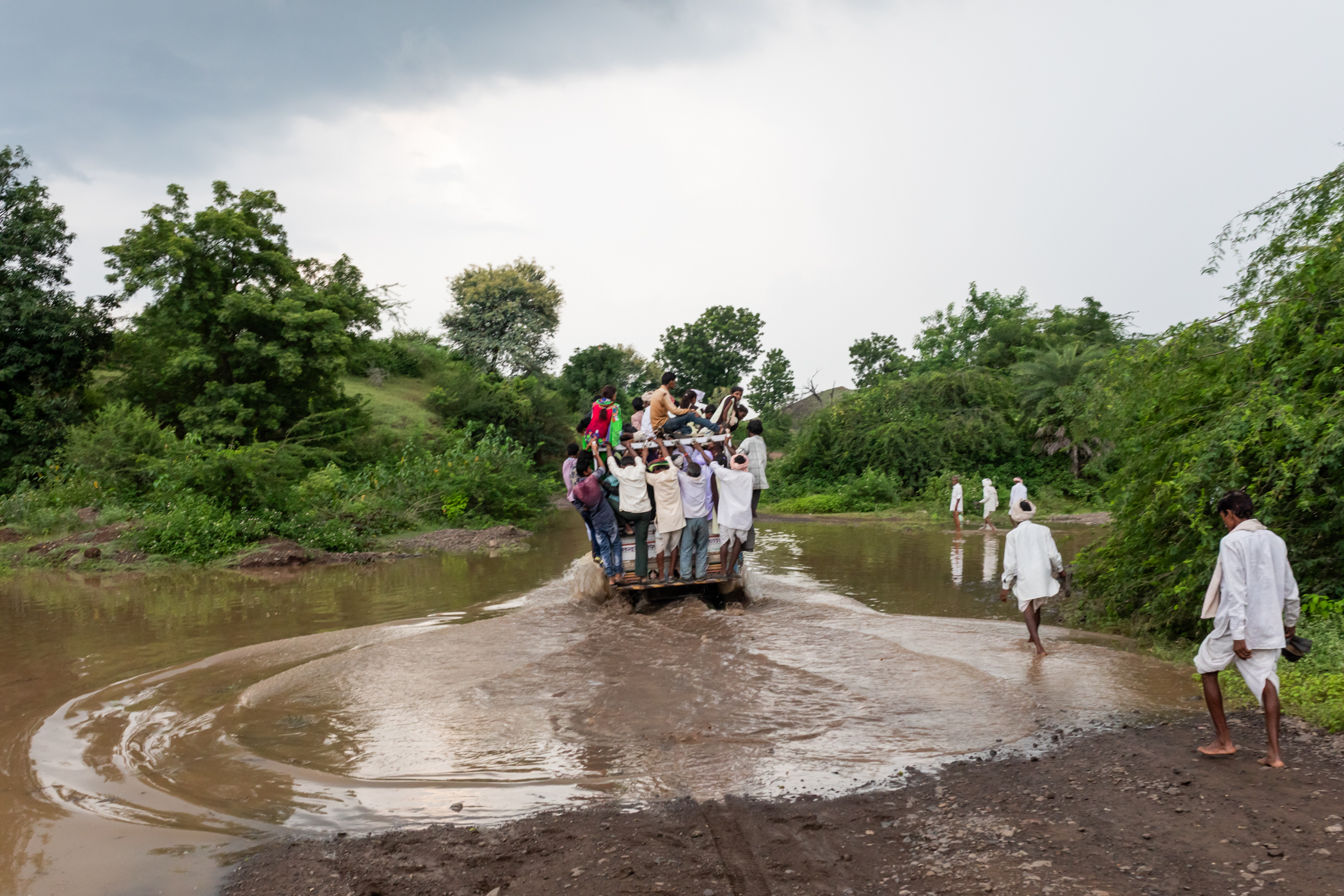
A pickup truck carrying Adivasis (Indigenous people) up the hill towards Chandankhedi in Dhar, Madhya Pradesh, passes through the rushing backwaters of the Sardar Sarovar Dam’s reservoir. On June 17, all gates of the controversial dam on the river Narmada were closed together for the first time, leading to the gradual submergence of areas upstream.
Waters Close Over Us
The Sardar Sarovar is the largest dam in the Narmada Valley Project, a multipurpose river development initiative that includes several dams on the Narmada and its tributaries in west-central India. Originally planned to be 80 metres tall, the dam was eventually built to nearly 139 metres. By volume, it is now the world’s second-largest concrete gravity dam and remains one of the most debated development projects in India.
For decades, groups such as the Narmada Bachao Andolan (NBA), led by activist Medha Patkar, opposed the project. They argued that it has caused extensive environmental, economic, social and cultural harm. On 17 June 2017, when the dam was completed and all its gates were closed for the first time, villages upstream began to experience gradual submersion.
According to NBA estimates, the project has affected at least 40,000 households in Madhya Pradesh alone. Around 90 per cent of them have not been fully resettled or rehabilitated, and many still live in villages that face the risk of being submerged in the near future.
September 2017.

A shepherd walks with his livestock through hills abutting the Narmada at Borkhedi in Barwani, Madhya Pradesh.
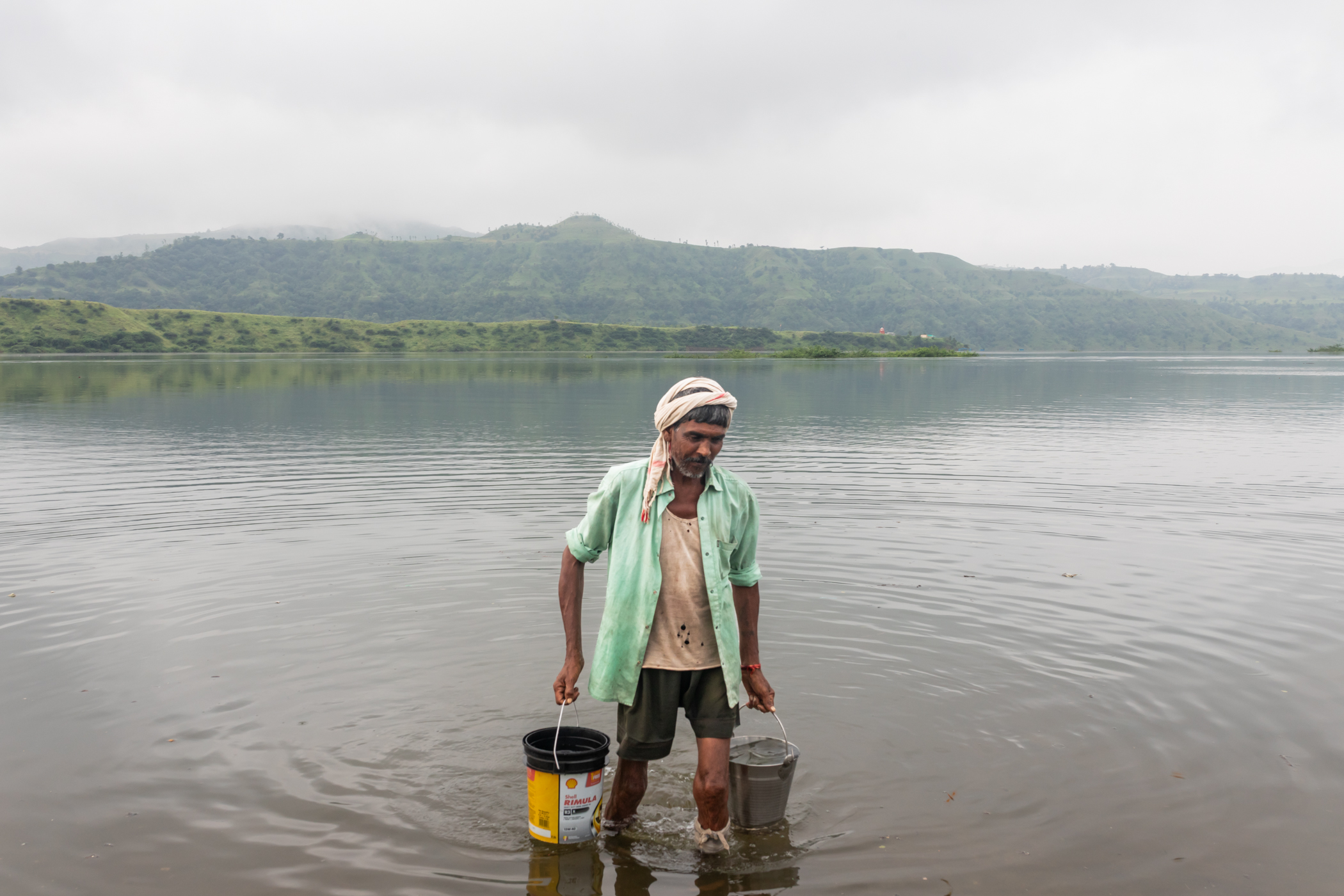
Nasra Solanki, 50, fetches water from the Narmada at Kakrana, Alirajpur, Madhya Pradesh. Not too long ago, before the Sardar Sarovar Dam’s gates were closed on June 17, the village extended all the way up till the green strip of land seen in the distance, he said. September 12, 2017.
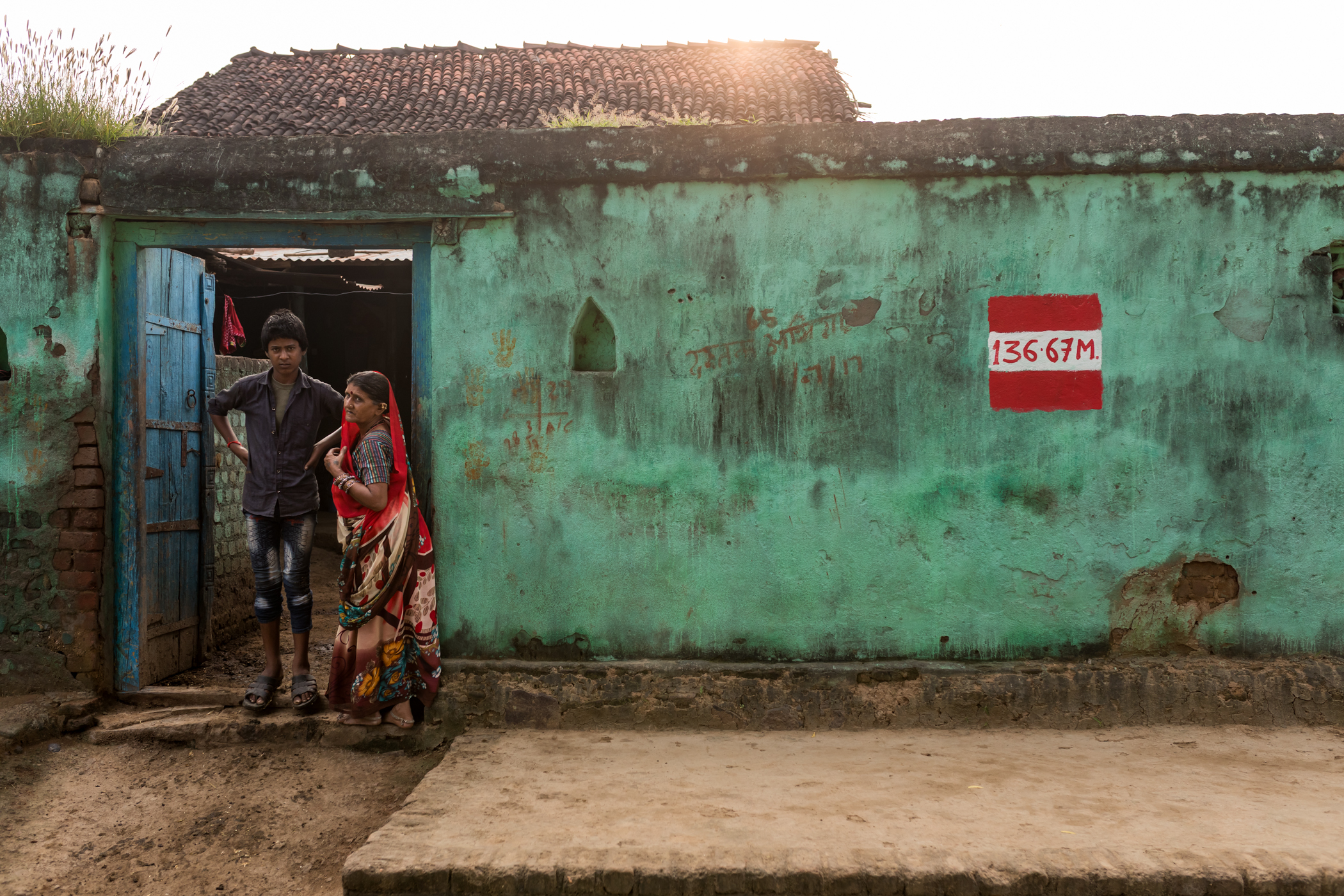
Officials mark the water level in the Sardar Sarovar Dam’s reservoir at which a house would submerge in Awali in Barwani, Madhya Pradesh. September 08, 2017.

Sunita Kharte, 25, and Solita Kharte, 20, pick green gram from their farm on a foothill in Borkhedi, Barwani, Madhya Pradesh. The backwaters are now less than 100 metres from their home. Faced with the threat of submersion, the Khartes, who are Barela Adivasis, have sown the quick-yielding bajra and green gram instead of cotton and maize. September 09, 2017.
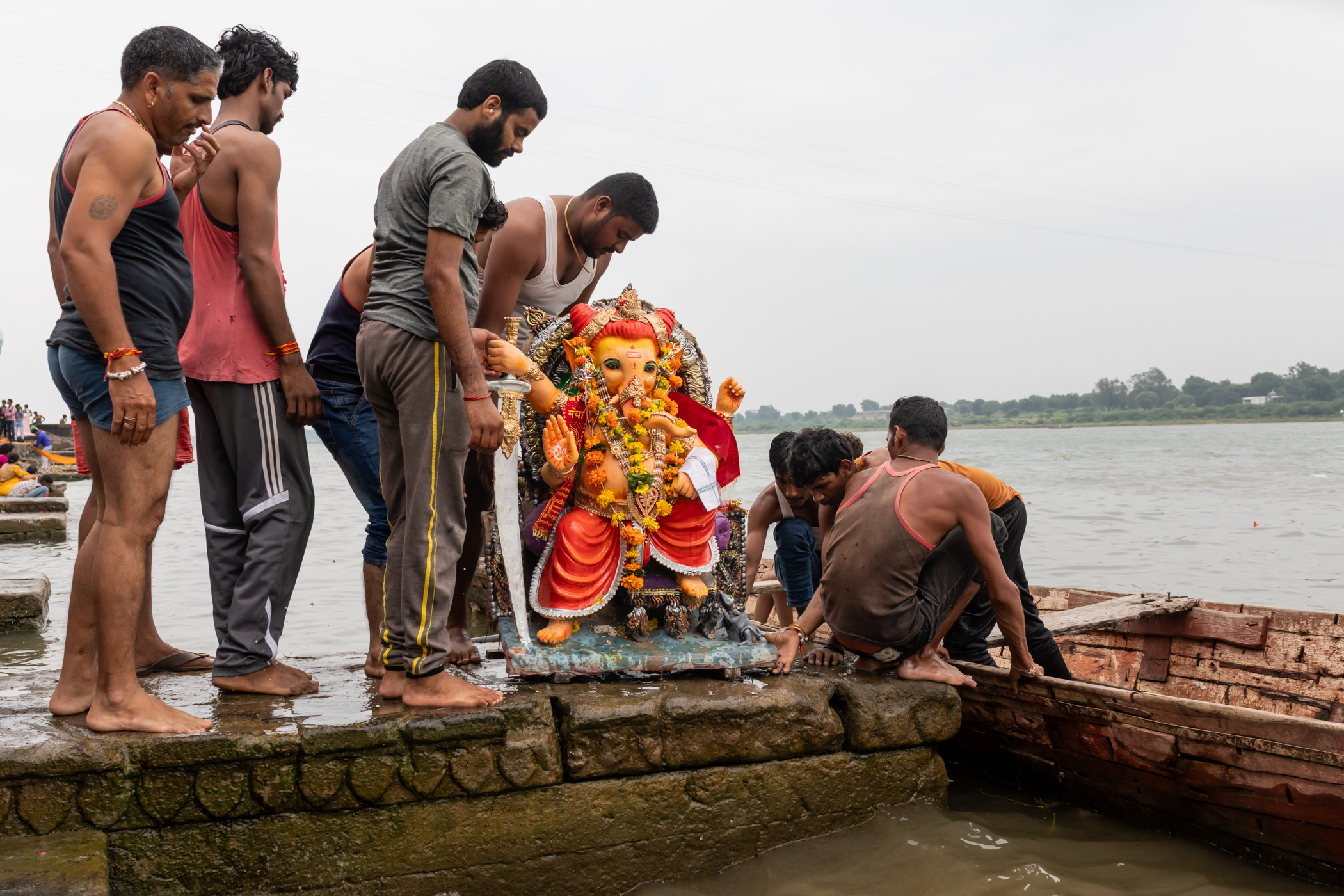
The Narmada is considered one of the seven sacred rivers of India, and holy sites along its course attract large numbers of pilgrims throughout the year. At Maheshwar in Khargone, Madhya Pradesh, devotees prepare to immerse an idol of Lord Ganesh in the river after celebrating Ganesh Chaturthi.
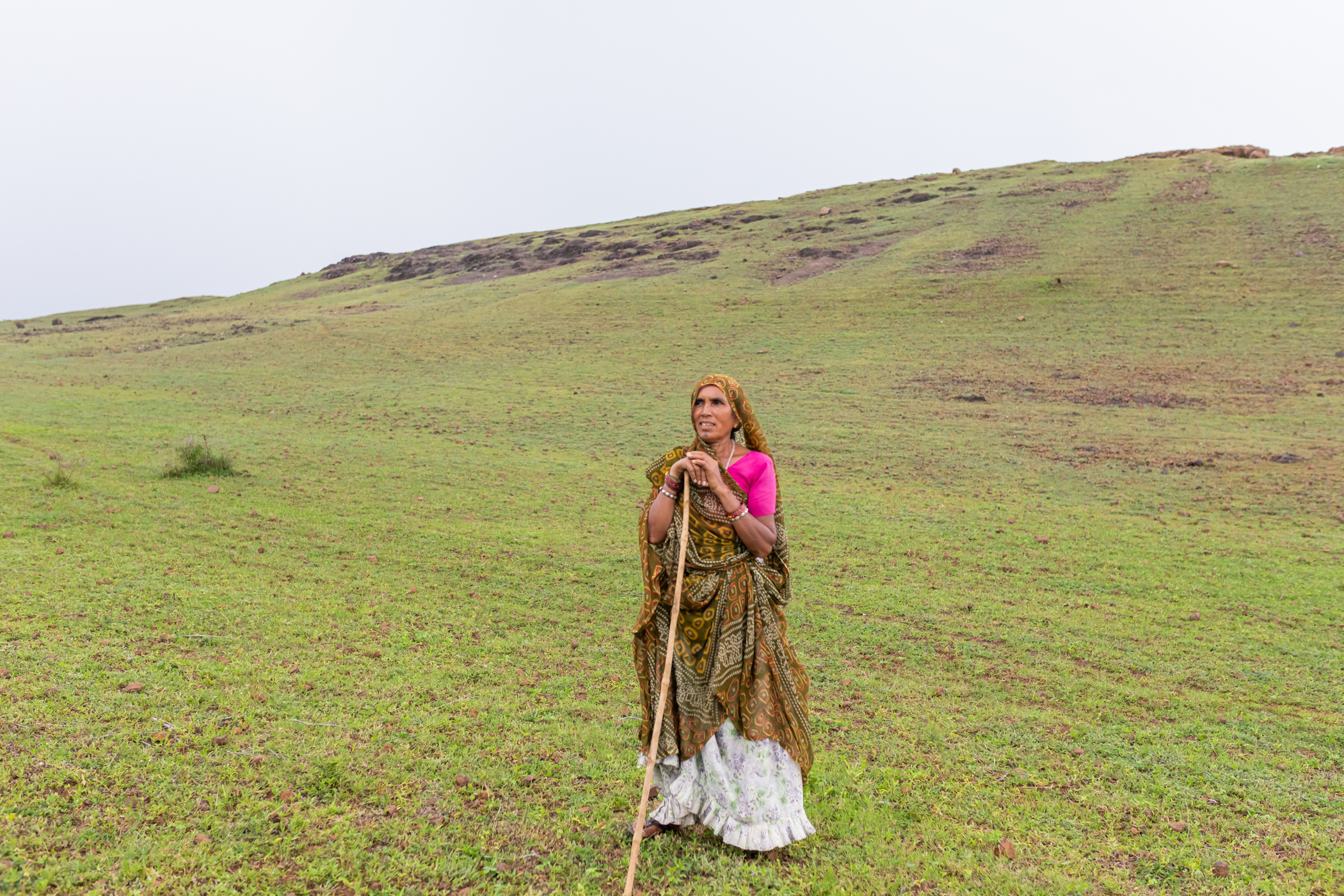
An indigenous Barela pastoralist in the Narmada submergence region near Chandankhedi, Dhar, Madhya Pradesh.
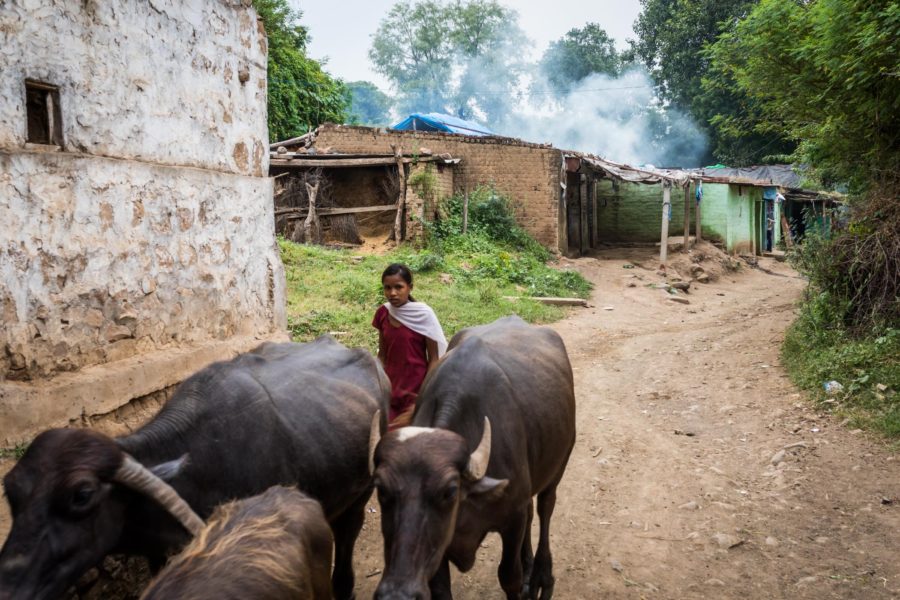
Pichhodi in Barwani, Madhya Pradesh, was washed away in the flood of 1970, following which villagers moved to higher ground. This place, too, was submerged–by the reservoir’s waters in 2013. Resettled villagers now find themselves close to submergence again. September 09, 2017.
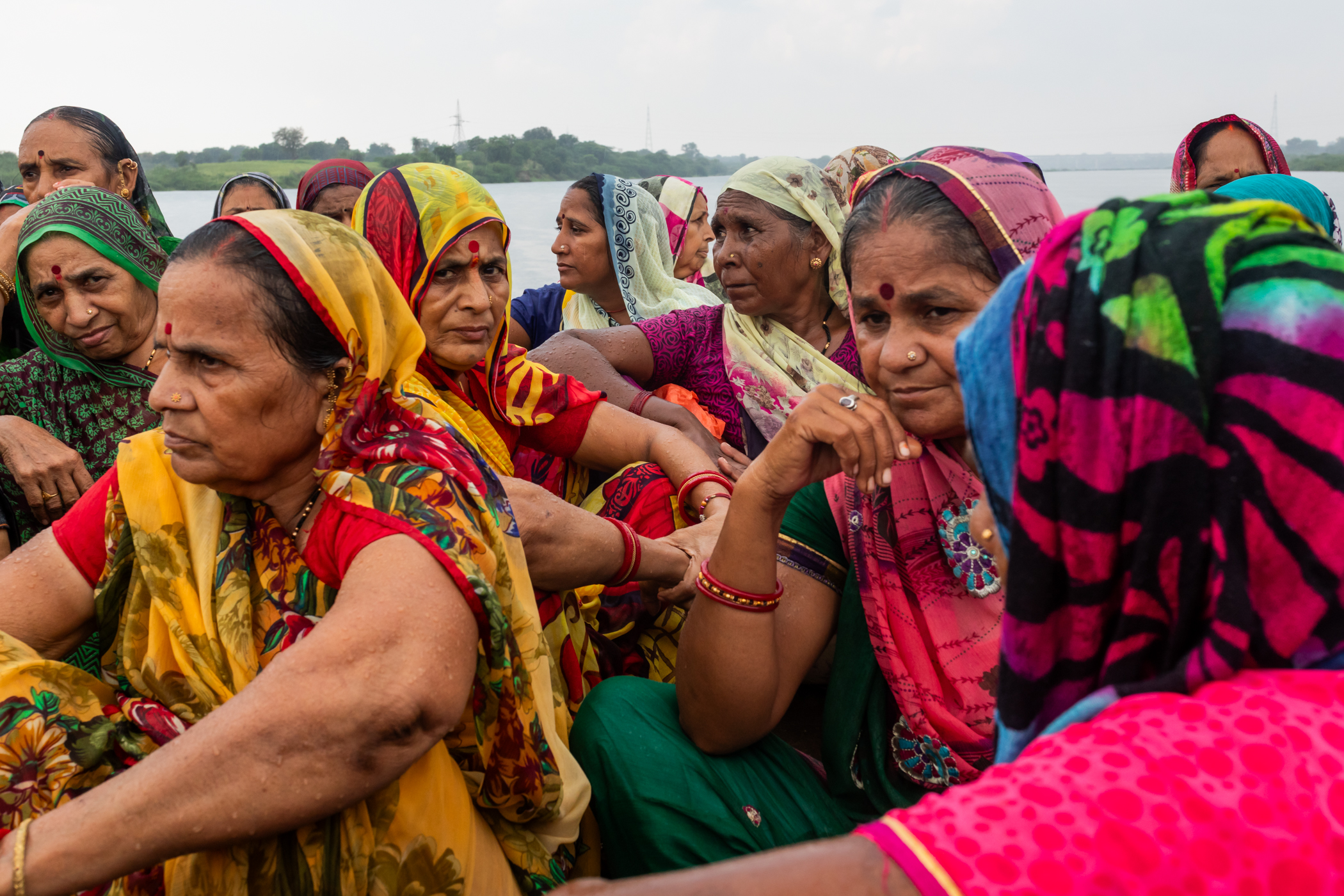
Mohan Barmal (60) and a hired labourer work on building a temple to Goddess Durga near his home at the rehabilitation site for the village of Pichhodi in Barwani, Madhya Pradesh. Part of the compensation he received is going into building the temple. September 13, 2017.
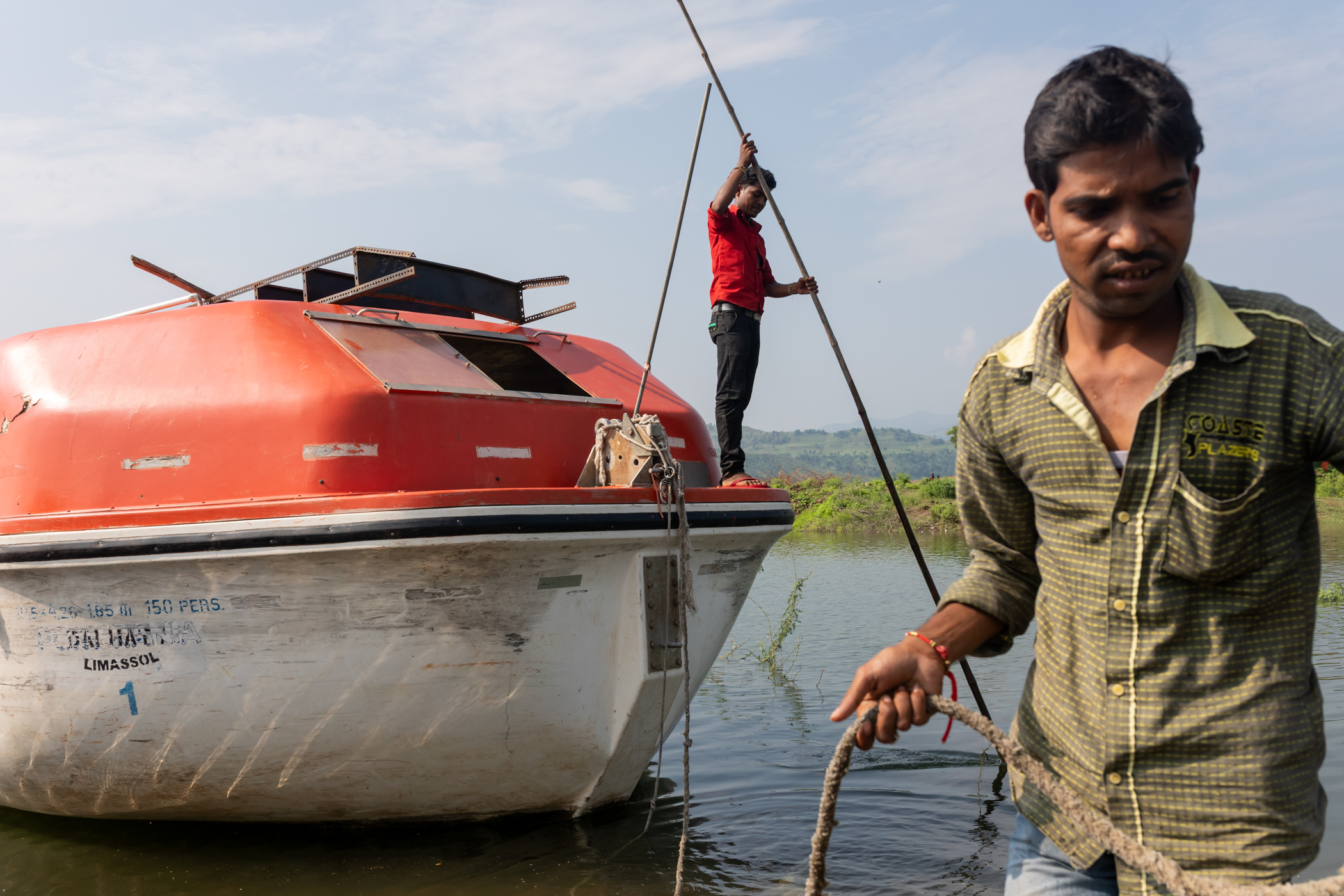
The Narmada is considered one of the seven sacred rivers of India, and holy sites along its course attract large numbers of pilgrims throughout the year. At Maheshwar in Khargone, Madhya Pradesh, devotees prepare to immerse an idol of Lord Ganesh in the river after celebrating Ganesh Chaturthi.
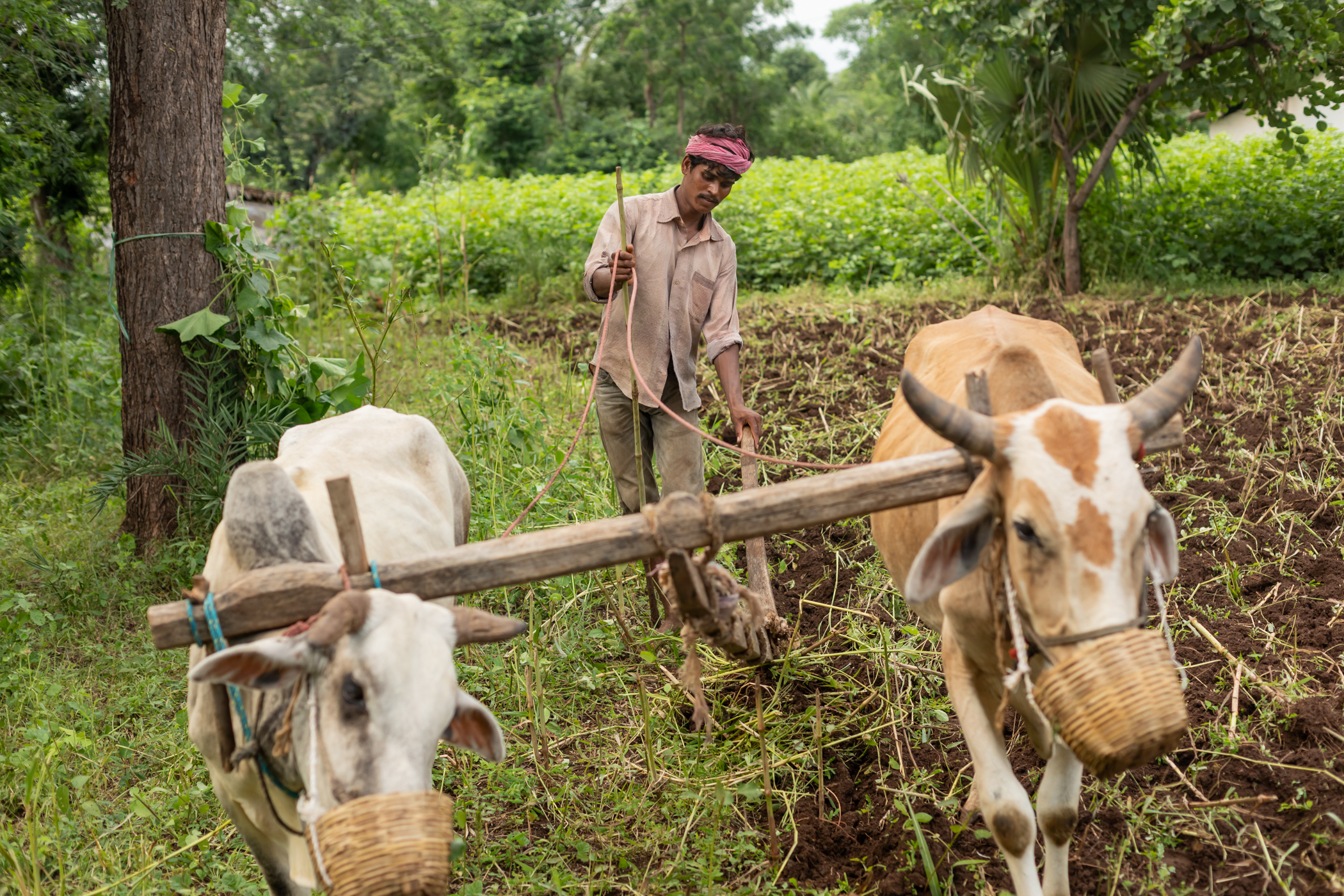
The Narmada is considered one of the seven sacred rivers of India, and holy sites along its course attract large numbers of pilgrims throughout the year. At Maheshwar in Khargone, Madhya Pradesh, devotees prepare to immerse an idol of Lord Ganesh in the river after celebrating Ganesh Chaturthi.
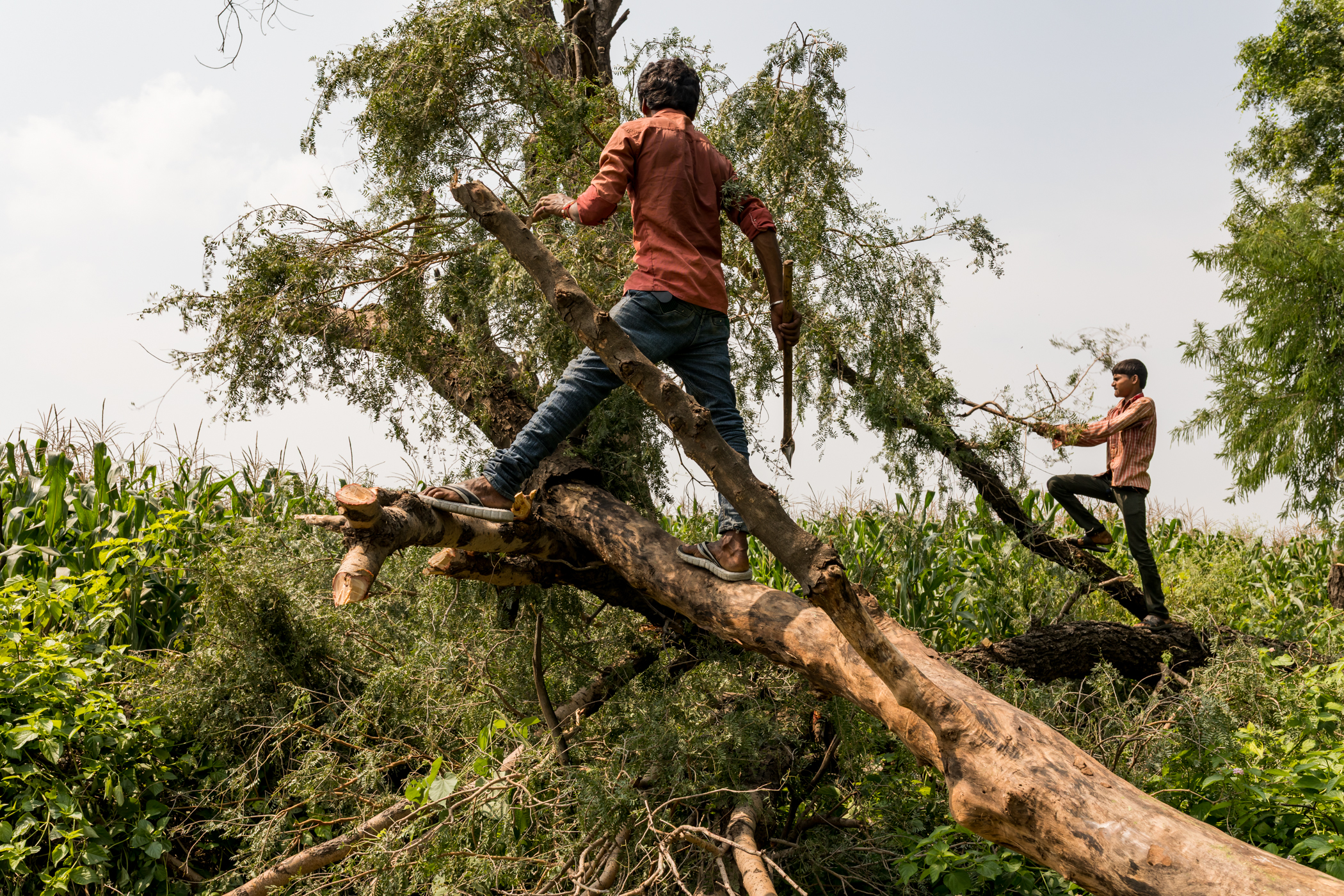
A weak tree is cut down to protect the crop standing next to it in Awali, Dhar, Madhya Pradesh. September 08, 2017.
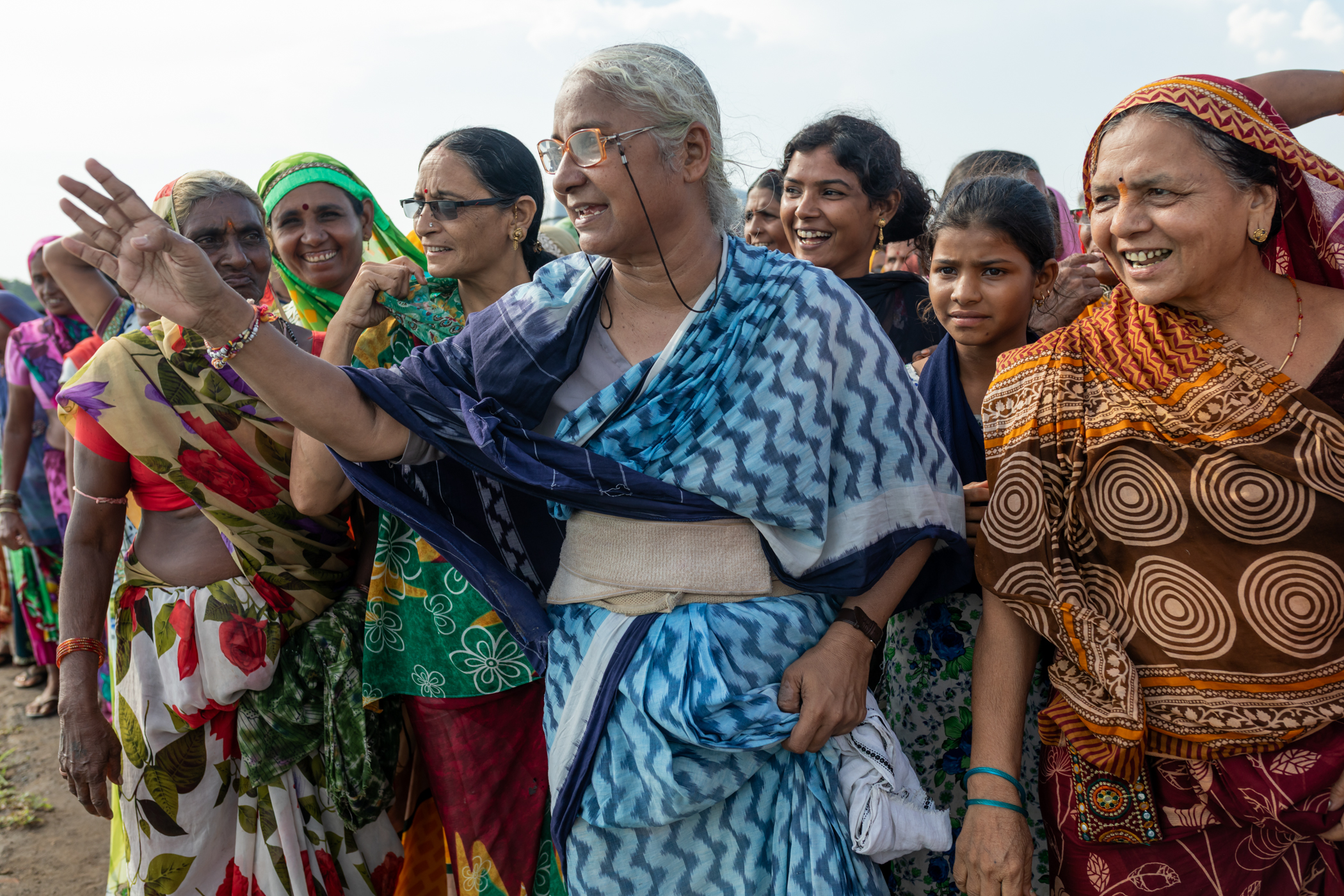
Mohan Barmal (60) and a hired labourer work on building a temple to Goddess Durga near his home at the rehabilitation site for the village of Pichhodi in Barwani, Madhya Pradesh. Part of the compensation he received is going into building the temple. September 13, 2017.
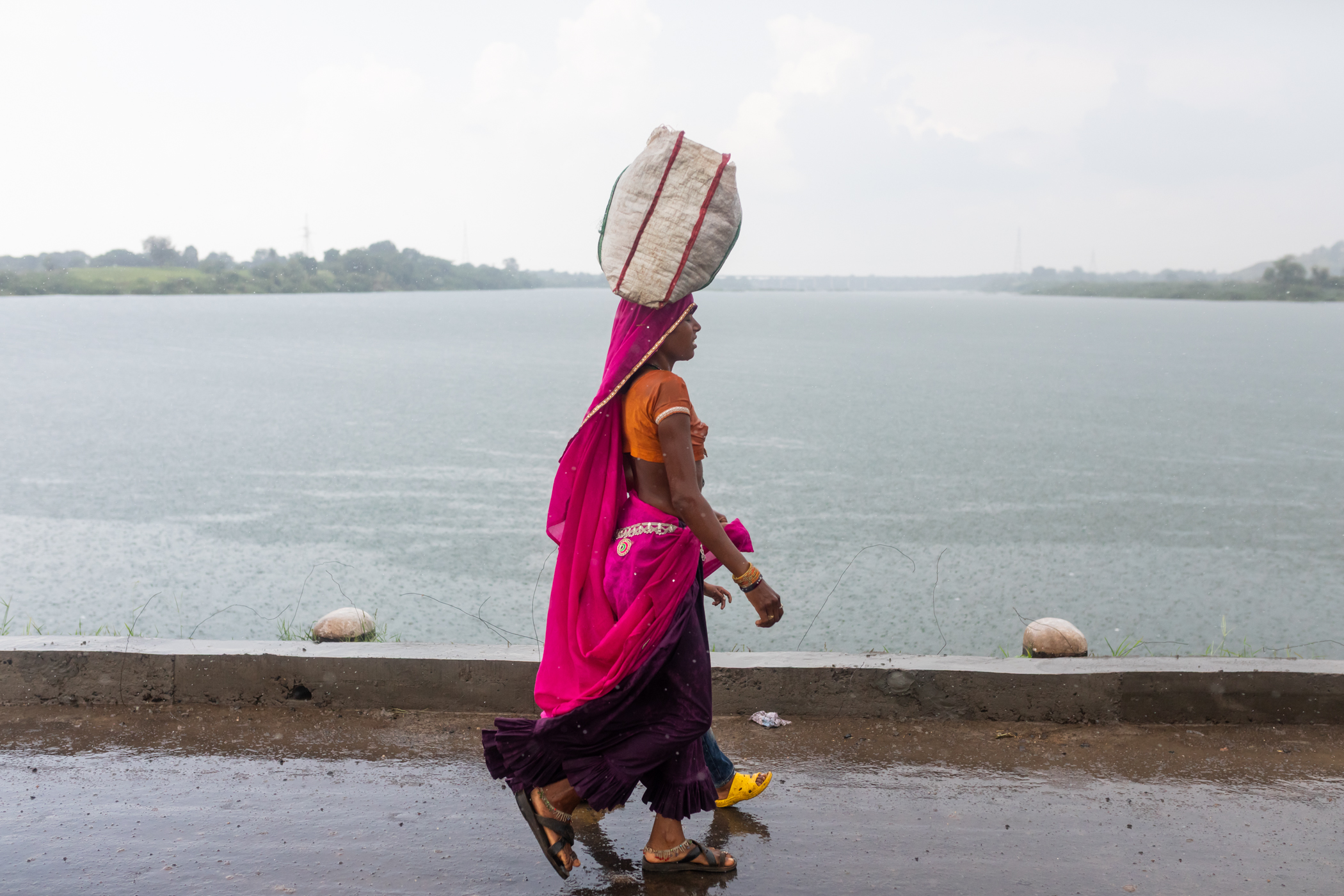
Pichhodi in Barwani, Madhya Pradesh, was washed away in the flood of 1970, following which villagers moved to higher ground. This place, too, was submerged–by the reservoir’s waters in 2013. Resettled villagers now find themselves close to submergence again. September 09, 2017.
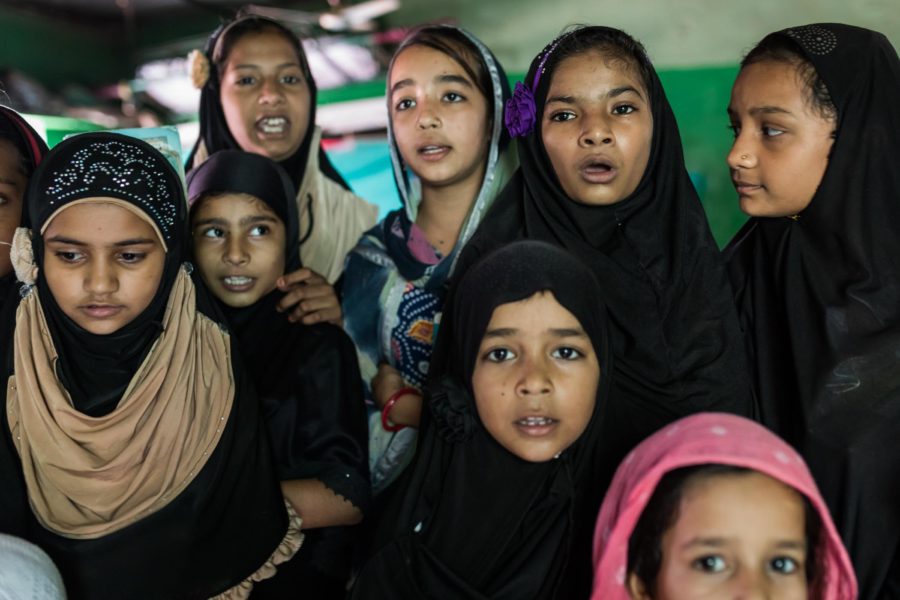
Students read prayers towards the end of the day’s classes at a madarsa in Chikhlada, Dhar, Madhya Pradesh. September 10, 2017.
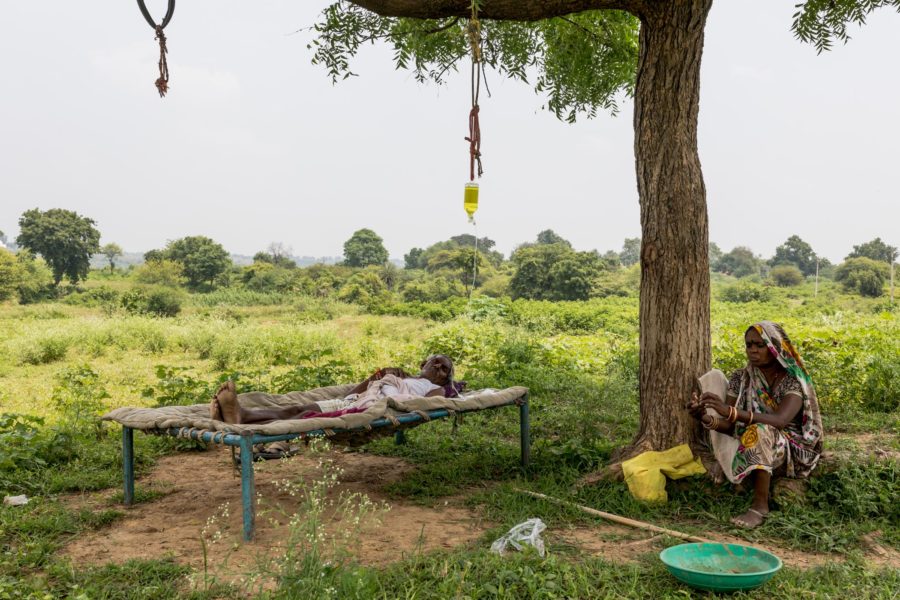
Sitaram Semliya (65) is on IV fluids to treat his jaundice and viral infection. Semliya and his wife Sajanbai (55), farm workers from Segaon in Dhar, Madhya Pradesh, are unable to make a living for the past eight days and may soon lose their home to the dam’s flooding backwaters. September 08, 2017.
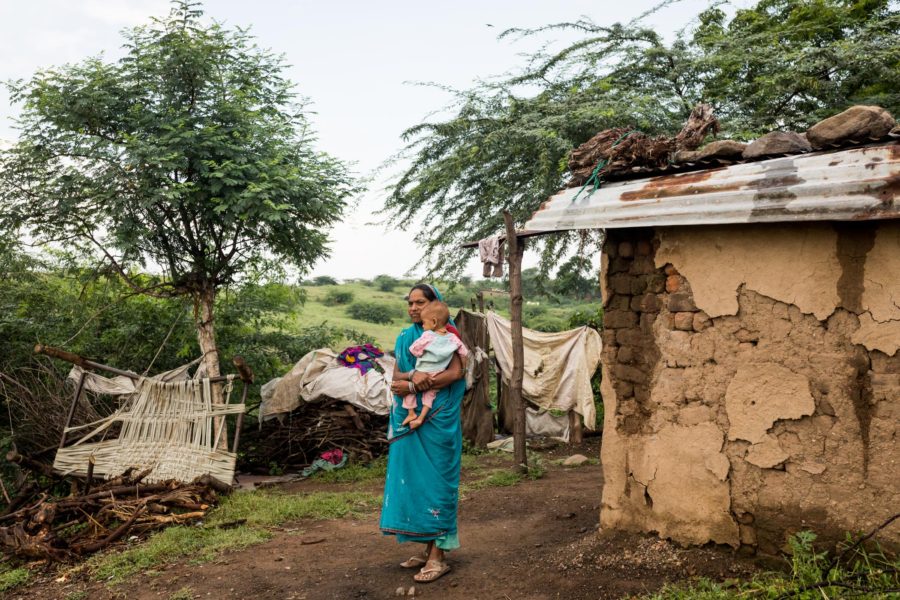
Rekha (25) and her family live atop a hillock by the Uri Baghri, a tributary of the Narmada, in Nisarpur, Dhar, Madhya Pradesh. As dam waters flood the surrounding low-lying areas, the hillock will no longer be habitable. Rekha said she has not received any compensation or land yet despite filing petitions with the gram panchayat at least six times. September 10, 2017.
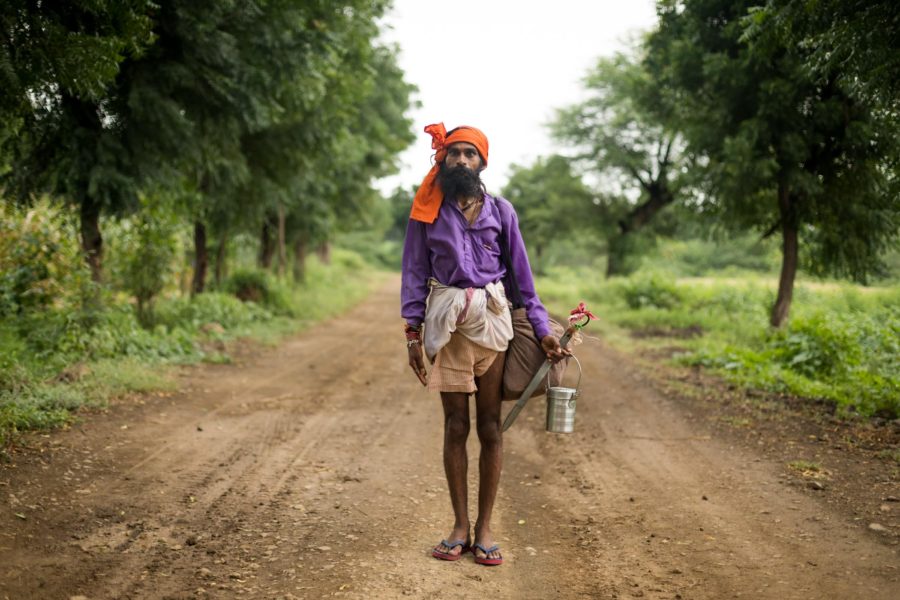
Lahidas Kanes, 32, was a policeman before he left home two years ago and embarked on the Parikrama, a 2,600-km circular journey around the Narmada from its birthplace in Amarkantak to the sea and back. He was walking back to Amarkantak–which could take another year–when he was photographed in the hills near Dehar, Dhar, Madhya Pradesh. The rising backwaters of the dam are expected to drown most of the places and shrines associated with the Parikrama. September 11, 2017.
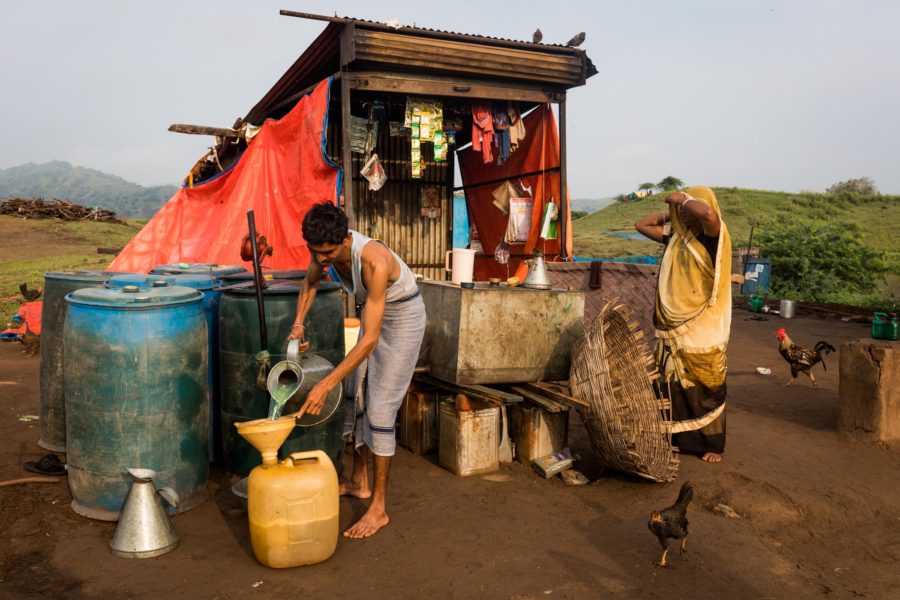
Kirta Bhaila, 38, fills up a jerry can with fuel for one of his two motorised boats. Bhaila and his wife Jili, 36, are now the only residents of a neighbourhood that has turned into an island, in Kakrana, Alirajpur, Madhya Pradesh. September 12, 2017.

A fisherman casts a net in the Narmada near Chikhalda, Dhar, Madhya Pradesh. Fishermen say they now manage to catch only two or three species where they caught seven earlier. September 06, 2017.
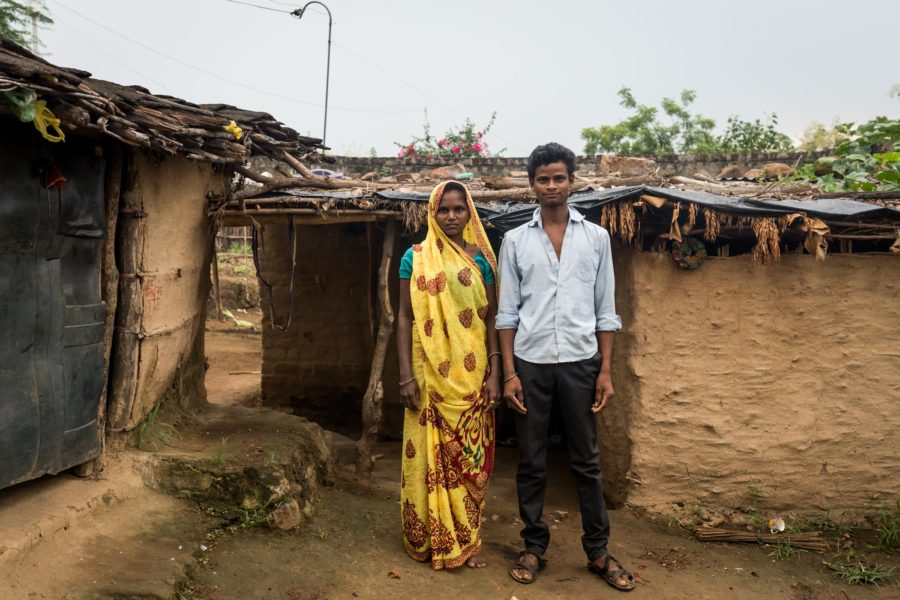
Rakesh Vaskale (25) and Lalita (24) are Mankar Adivasi farm workers who earn INR 100 each for a day spent picking cotton or harvesting maize in Dehar, Dhar, Madhya Pradesh. The village, relocated in 2005, is now facing submergence again. The couple may accompany Rakesh’s father, who has been offered resettlement in Gujarat. September 11, 2017.
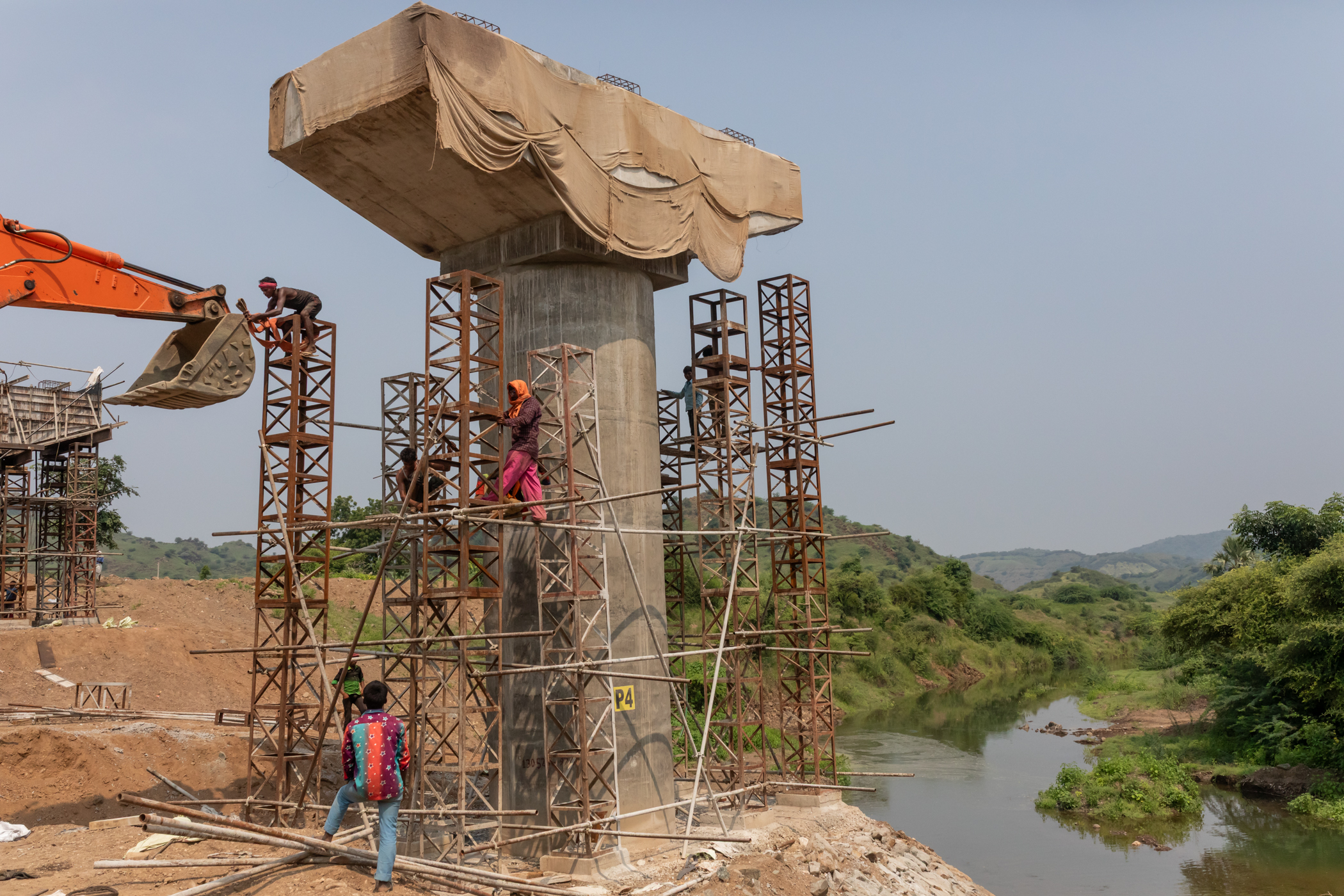
A bridge comes up across the backwaters of the Narmada at Borkhedi, Barwani, Madhya Pradesh. September 09, 2017.

Mohan Barmal (60) and a hired labourer work on building a temple to Goddess Durga near his home at the rehabilitation site for the village of Pichhodi in Barwani, Madhya Pradesh. Part of the compensation he received is going into building the temple. September 13, 2017.
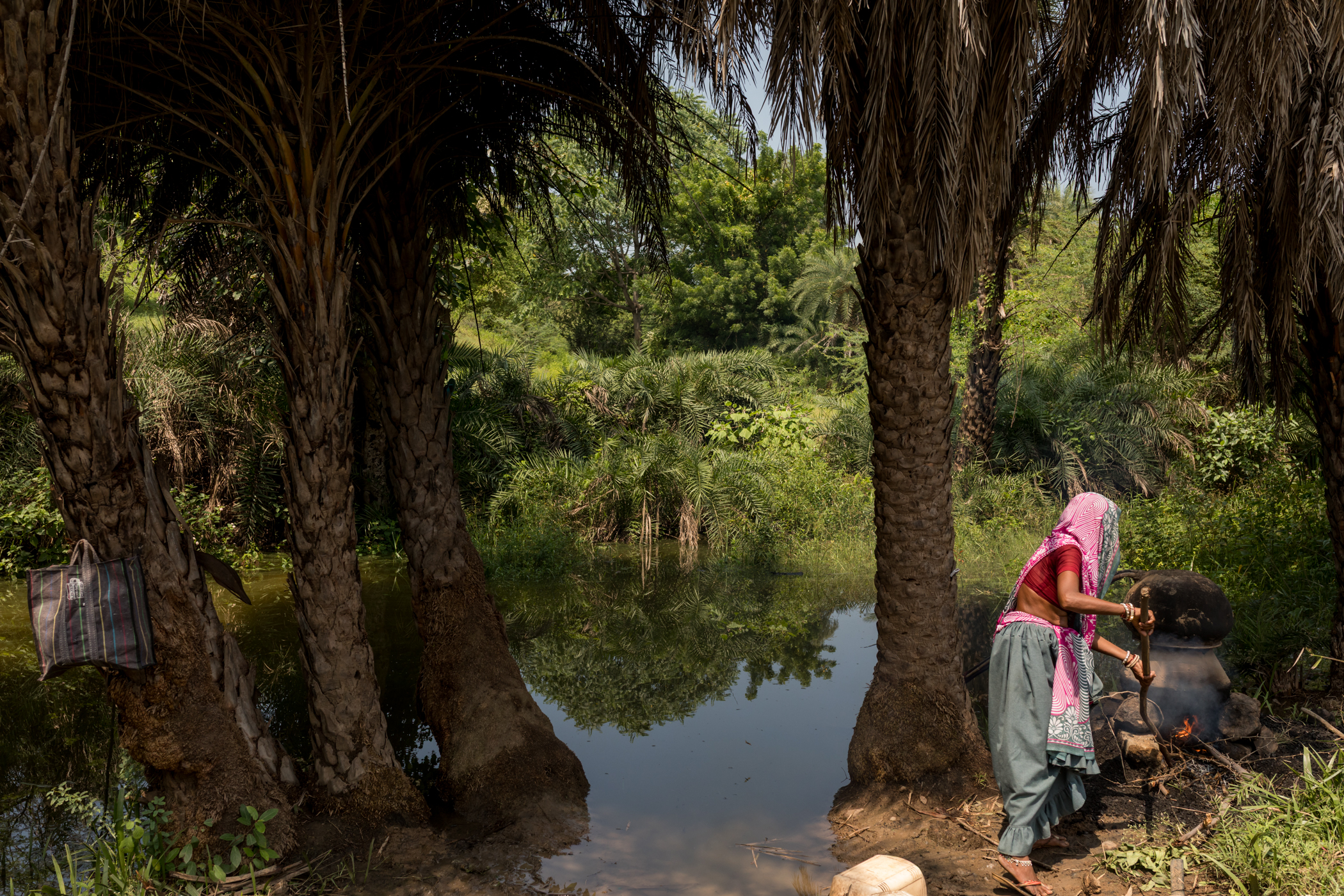
A Barela Adivasi woman brews mahua liquor even as the rising waters of the Narmada reach her farm in the hills near Nisarpur, Dhar, Madhya Pradesh. September 11, 2017.


